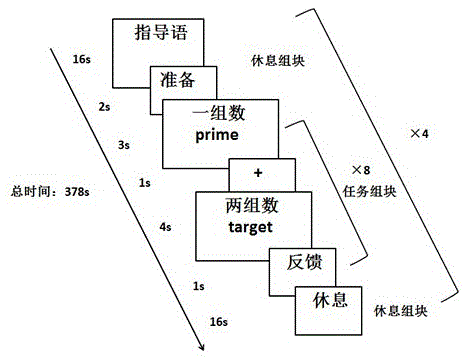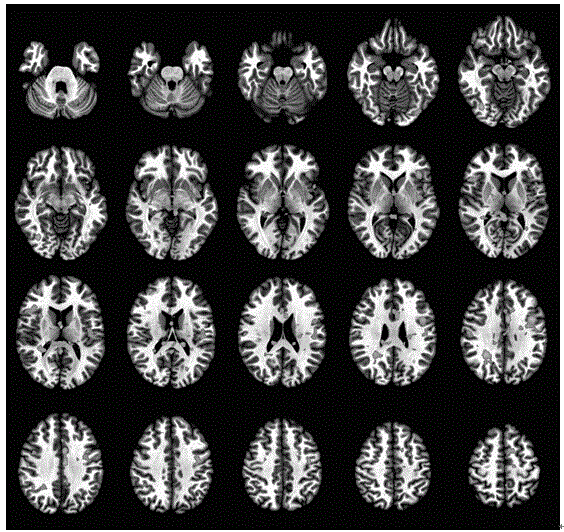A method for fMRI identification of camouflaged cognitive dysfunction
A technology of cognitive dysfunction and identification method, which is applied in the field of fMRI identification of fake cognitive dysfunction, and can solve problems such as reports that have no practical application
- Summary
- Abstract
- Description
- Claims
- Application Information
AI Technical Summary
Problems solved by technology
Method used
Image
Examples
Embodiment Construction
[0032] 1. The commonly used equipment for fMRI disguised cognitive impairment identification technology includes:
[0033](1) 1.5T or 3.0T magnetic resonance scanner: equipped with standard head coil and echo planar (EPI0) system; 1.5T scanning parameters: ① Two-dimensional structural image: SE sequence T1WI, axial, TR505ms, TE14ms, Flip angle 90 degrees, slice thickness 6mm, spacing 0mm, number of slices 20, field of view 230mm×230mm, matrix 256×256; ②Three-dimensional whole-brain structural image: fast low angle shot FLASH T1WI, sagittal plane , TR30ms, TE3.0ms, flip angle 30 degrees, slice thickness 1.3mm, spacing 0mm, slice number 120, matrix 256×256; ③ Functional image: using gradient echo-planar imaging (gradient-echo, echoplannarimaging, GE -EPI) sequence T2*WI, axial position, TR2000ms, TE45ms, flip angle 90 degrees, layer thickness 6mm, spacing 0mm, field of view 230mm×230mm, matrix 64×64, number of layers 20, number of frames 189 frames / layer, long time 378s.
[00...
PUM
 Login to View More
Login to View More Abstract
Description
Claims
Application Information
 Login to View More
Login to View More - R&D
- Intellectual Property
- Life Sciences
- Materials
- Tech Scout
- Unparalleled Data Quality
- Higher Quality Content
- 60% Fewer Hallucinations
Browse by: Latest US Patents, China's latest patents, Technical Efficacy Thesaurus, Application Domain, Technology Topic, Popular Technical Reports.
© 2025 PatSnap. All rights reserved.Legal|Privacy policy|Modern Slavery Act Transparency Statement|Sitemap|About US| Contact US: help@patsnap.com



